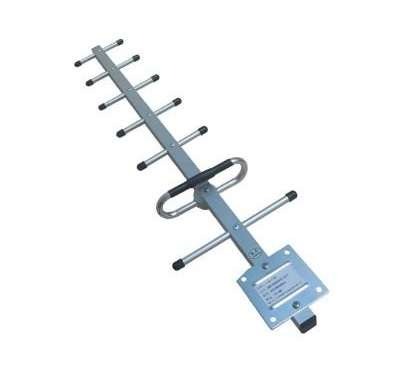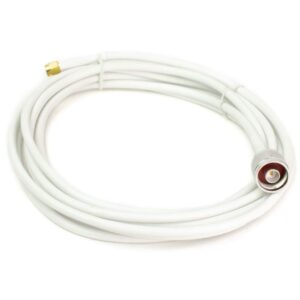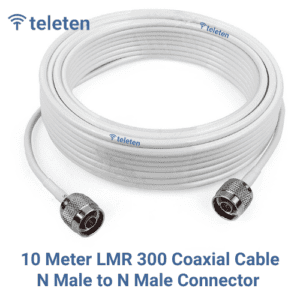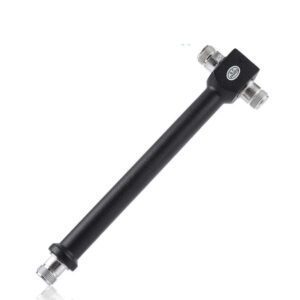Design Concept:
Yagi-Uda Antenna: The Yagi antenna consists of a series of elements mounted on a boom. These include:
Driven Element: The central element connected to the feedline, where the RF signal is applied or received.
Reflector: Positioned behind the driven element, it reflects the signal towards the driven element to enhance gain.
Directors: Located in front of the driven element, these elements help focus the signal in the desired direction, improving gain and directivity.
Key Features:
High Gain:
18 dBi Gain: Provides a significant amplification of the signal in a specific direction. This high gain helps in extending the effective range and improving signal clarity compared to lower-gain antennas.
Frequency Range:
800-2500 MHz: Covers a wide range of frequencies, including cellular (GSM, LTE), some satellite communications, and other high-frequency applications.
Directional Pattern:
Focused Beam: Offers a directional radiation pattern, which helps in improving signal reception and transmission in a specific direction while reducing interference from other directions.
High Front-to-Back Ratio: Typically features a high front-to-back ratio, making it effective at minimizing signals from the rear.
Construction:
Materials: Made from durable materials such as aluminum or stainless steel to ensure longevity and withstand environmental conditions.
Design Specifications:
Frequency Range: 800-2500 MHz
Element Lengths: The lengths of the elements vary based on the frequency they are designed for. Lower frequencies require longer elements, while higher frequencies use shorter elements.
Element Spacing: Spacing between elements is carefully designed to optimize gain and directivity across the frequency range.
Element Configuration:
Driven Element: Typically the same length as the wavelength of the operating frequency or slightly longer.
Reflector and Directors: The number and spacing of reflectors and directors are optimized for achieving the 18 dBi gain. More directors generally mean higher gain.
Materials:
Elements: Usually made from lightweight, corrosion-resistant metals such as aluminum or stainless steel.
Boom: The boom is often constructed from strong yet lightweight materials to support the elements and ensure stability.
Feed Point:
Impedance Matching: Designed to match the impedance of the feedline, typically 50 ohms, to ensure efficient power transfer and minimize SWR (Standing Wave Ratio).
Construction and Installation:
Assembly:
Elements and Boom: Assemble the elements onto the boom according to the design specifications. Ensure proper alignment and secure attachment to achieve the desired performance.
Feed Line: Connect the feed line to the driven element using high-quality coaxial cable to reduce signal loss.
Mounting:
Pole or Mast Mount: Securely mount the antenna on a pole or mast. Ensure that it is mounted correctly to maintain alignment and stability.
Height and Location: Mount the antenna as high as possible and away from obstructions to enhance performance.
Tuning and Testing:
SWR Measurement: Measure the SWR across the frequency range to ensure it is within acceptable limits. Adjust the antenna or matching network if necessary.
Performance Testing: Verify the antenna’s performance to ensure it is receiving and transmitting signals effectively across the frequency range.
Applications:
Cellular Communication: Suitable for enhancing signal strength in cellular networks, including GSM, LTE, and other high-frequency communications.
Broadcasting: Useful for receiving and transmitting TV and radio signals, especially where high gain and directionality are needed.
Amateur Radio: Ideal for amateur radio operators needing high gain for long-distance communication on various frequencies.
Satellite Communication: Can be used for certain satellite communications, depending on the frequency and design specifics.
Maintenance:
Regular Inspection: Periodically check the antenna for wear, damage, or corrosion, especially if installed outdoors.
Cleaning: Clean the elements and feed point to maintain performance and extend the lifespan of the antenna.





